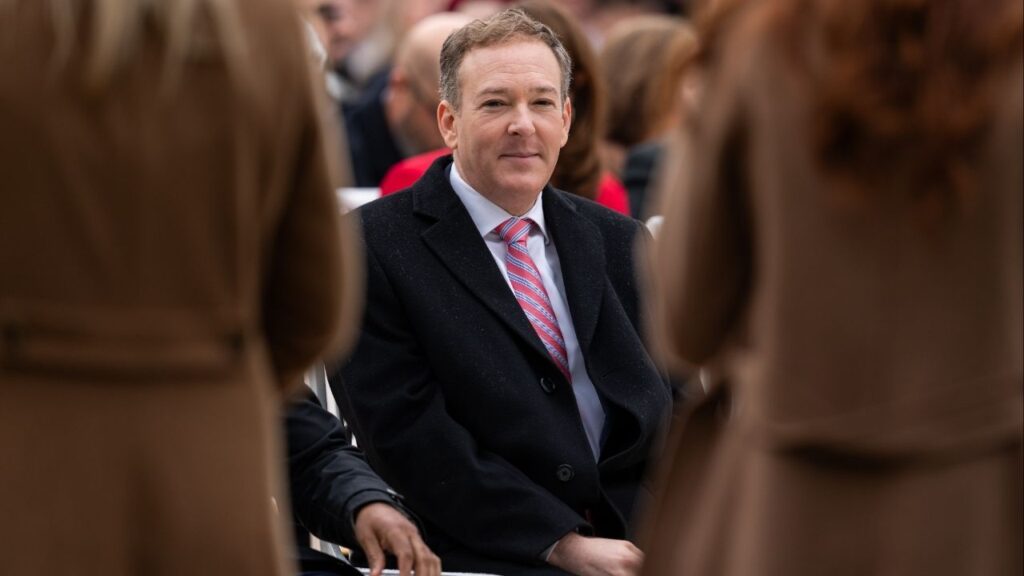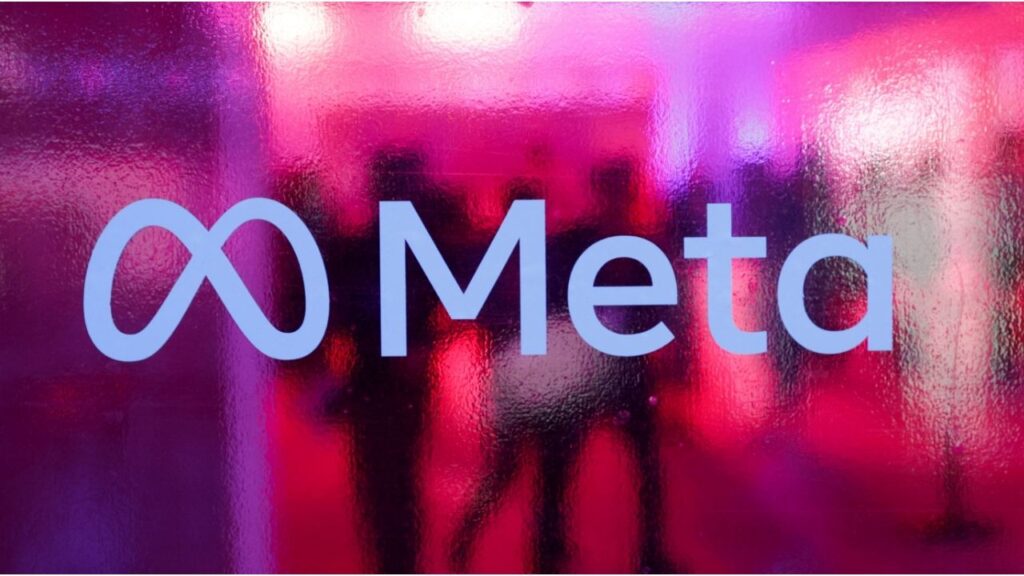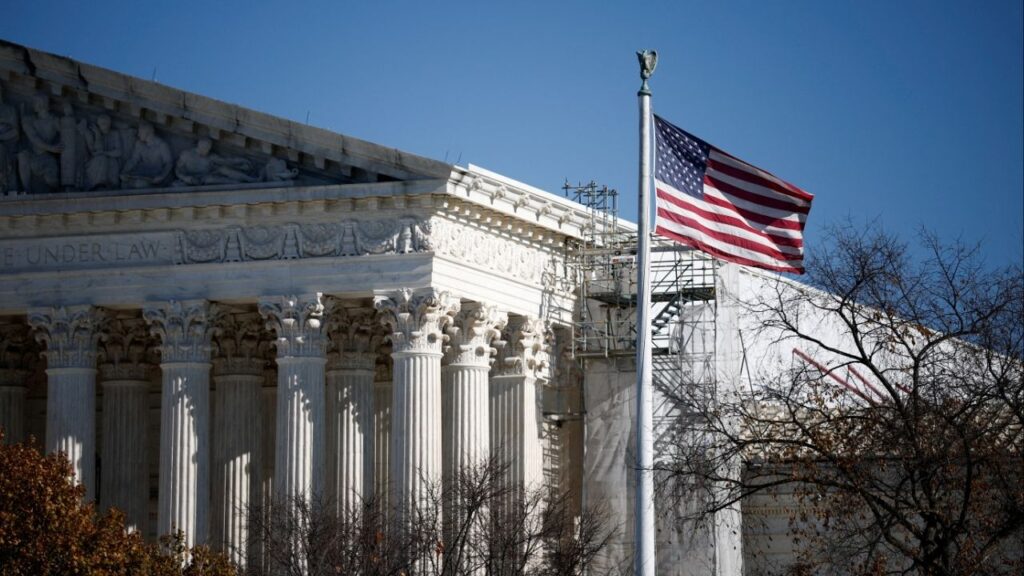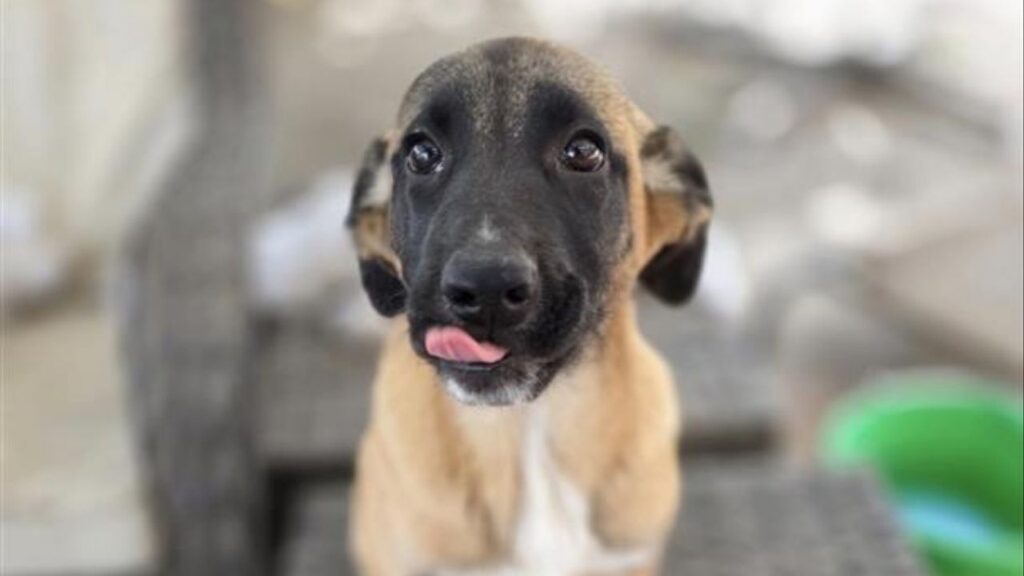Share
NEW YORK — From the silky strut of Afghan hounds to poodles with coats sculpted like confections, the Westminster Kennel Club’s green carpet spotlights manicured, pedigreed canines vying to be deemed top dog. But they aren’t just for show.
Steve, a German wirehaired pointer, showed at Westminster last year and represented his breed before millions of Thanksgiving Day TV viewers at the National Dog Show in Philadelphia in 2018. But he also wears other hats. Or collars, actually.
“He can transition from being a pretty show dog to throwing on his vest on the same day … and do service dog stuff,” says owner Shenandoah Ellis-Ulmer, a r etired Air Force master sergeant .
Steve helps her navigate public places with post-traumatic stress disorder by sensing when she’s getting anxious and standing on her feet, grounding her emotionally. He’s also an ace bird-hunting dog for her husband and fellow Air Force vet, Michael Ulmer.
“We think that certain dogs can only do certain things, but Steve has certainly made me realize that we don’t give our dogs enough credit,” says Ellis-Ulmer, of Fredon Township, New Jersey.
Not every Westminster dog has a sideline, but there are links between the show ring and the specialized work of service and therapy dogs, animal actors, bomb-sniffers, search-and-rescue K9s, and more.
Many Working Dogs Don’t Have a Show Pedigree
Sometimes those connections are family ties.
Rumor, the German shepherd chosen best in show at Westminster in 2017, counts among her puppies two PTSD service dogs that live with veterans. Two more pups are training toward that goal.
“Dogs have always been pretty good to us, so this is the way that we can give back,” says Rumor co-owner and co-breeder Kent Boyles.
Boyles, of Edgerton, Wisconsin, says he and partner Liz Oster have always aimed to produce “all-around dogs” for pets and service, not just show champs.
After all, many of the more than 200 breeds and varieties at Westminster this year were originally developed for some function. Even if they no longer do their traditional tasks, “these are purpose-bred dogs that still maintain those instincts,” Westminster spokeswoman Gail Miller Bisher said.
Tabitha, a Doberman pinscher, was initially a show dog for retired New York Police Department officer John Marinos, who has handled other dogs at Westminster. Then an acquaintance suggested Tabitha try out as a bomb-sniffing K9.
Now, Marinos handles Tabitha as she checks for explosives at major events and dignitaries’ private planes. The job requires a dog with not only a great nose but composure around commotion and strangers, and “the show ring definitely helps” with that, says Morgan Dalis of Maximum K9 Detection, the company that deploys Tabitha.
Many working dogs don’t have a show pedigree. The German shepherds, Labs and other pups bred and trained by the University of Pennsylvania’s Penn Vet Working Dog Center are “almost like a whole different breed” than their show counterparts, says Dr. Cynthia Otto, a professor.
Some Organizations Train Shelter Dogs for Service, Search and Other Jobs
Looks don’t matter much, and the dogs have a “go-go-go-go-go-go-go” drive to seek out scents, she says. “They’re not what most would want as your average house pet.”
To golden retriever breeder Theresa Yeager, though, it’s a point of pride to see a litter produce both show and working dogs. Like Rainier, one of the country’s top 20 show goldens, and his siblings that do therapy and search-and-rescue work.
“Ideally, that’s what you want — you want the dog that has the beautiful conformation and also has nice, strong working ability,” says Yeager, a retired teacher in Bryan, Texas. To her, “that’s really the whole point of breeding.”
Rainier’s brother Cooper and Cooper’s owner, Robert Andrews — until recently an Austin, Texas, police officer — trained and searched for missing people with a volunteer organization. Andrews, now working for a state agency, says he was struck by Cooper’s dedication and the connection that grew as they learned “how each other worked and what we could tolerate.”

Work isn’t purely for purebreds. Some organizations train shelter dogs for service, search and other jobs.
‘They’re Not Just Show Dogs’
“It’s probably not the easiest way to do it, but it’s certainly wonderful to see that dog go from being in a shelter to then deploying and going out and assisting survivors,” says Denise Sanders of the National Disaster Search Dog Foundation. Its canine graduates have responded to earthquakes, hurricanes and other catastrophes around the world.
Lacey the Lab responds to a different kind of crisis. She’s a champion agility dog with “a very serious day job,” says owner, breeder and handler Dr. Colleen Copelan.
The job: soothing and helping draw out troubled young patients in Copelan’s psychiatry office in Camarillo, California.
Lacey and Copelan were scheduled to return to Westminster Saturday but had a last-minute change of plans.
Ghost, the Norwegian buhund, is a Westminster veteran and won his breed at the 2018 National Dog Show.

“They’re not just show dogs,” she says. “At least my guys, they aren’t pampered pooches.”
RELATED TOPICS:
Categories

MAHA Activists Urge Trump to Fire His EPA Administrator

Meta Strikes Multiple AI Deals With News Publishers

















